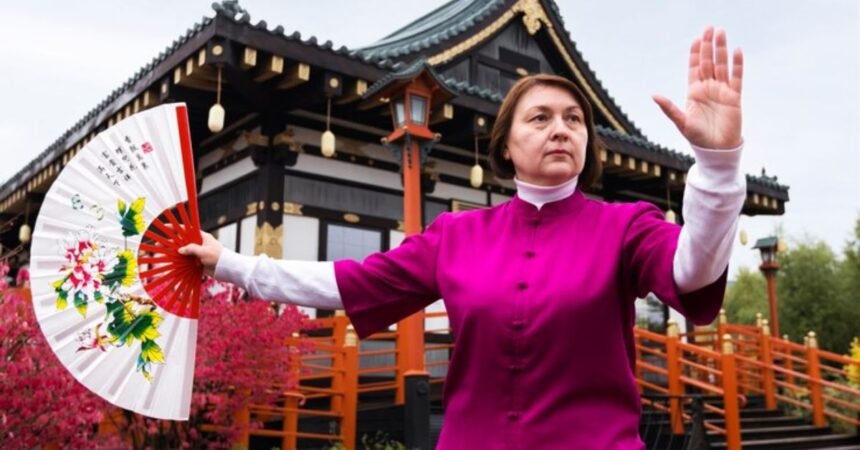Festivals hold a special place in Japan’s vibrant cultural landscape, celebrating everything from ancient rituals to modern community gatherings. One such prominent event is Yahatai Kodosai, a festival that reflects Japan’s deep-rooted traditions, religious beliefs, and communal spirit. Yahatai Kodosai has become a symbol of cultural pride, showcasing elaborate performances, traditional costumes, and historical significance. In this article, we delve into Yahatai Kodosai, examining its historical background, key concepts, significance, and how it continues to impact modern Japanese culture.
Whether you’re a traveler, a cultural enthusiast, or someone interested in Japan’s rich heritage, this comprehensive guide to Yahatai Kodosai offers insights into why this festival remains a cornerstone of Japanese celebrations.
What is Yahatai Kodosai?
Defining Yahatai Kodosai
Yahatai Kodosai is a traditional Japanese festival with origins deeply tied to regional cultural practices, Shinto beliefs, and communal celebrations. The name “Yahatai” refers to the processional floats, called “yatais,” used during the festival, while “Kodosai” denotes a festival or gathering. Held annually, Yahatai Kodosai features impressive displays of these floats, each adorned with intricate decorations, showcasing the craftsmanship of local artisans.
The festival serves not only as an entertaining spectacle but also as a ceremonial event meant to honor the deities and strengthen the bonds within the community.
Historical Background
The origins of Yahatai Kodosai can be traced back centuries, deeply connected to the Shinto religion. Shinto, an indigenous faith of Japan, emphasizes the importance of kami (deities or spirits) and reverence for nature. The festival was historically a way for communities to give thanks to the kami for blessings such as bountiful harvests, protection, and prosperity.
Over the years, Yahatai Kodosai has evolved, but its essence remains rooted in paying homage to the divine and fostering community cohesion through shared traditions. This transformation has allowed the festival to maintain its relevance while integrating aspects of modern culture.
Importance and Benefits of Yahatai Kodosai
Cultural Preservation
Yahatai Kodosai plays a crucial role in preserving traditional Japanese customs, including traditional dance, music, and craftsmanship. The elaborate floats are not only a testament to artistic skill but also a means of passing down techniques from one generation to the next. These artistic forms, such as wood carving and painting, are central to the festival’s visual appeal and hold significant cultural value.
Additionally, by participating in the festival, both locals and visitors gain an understanding of the cultural importance of preserving Japan’s historical practices. The festival helps prevent these traditions from fading away in the face of modernization.
Community Bonding
Yahatai Kodosai is more than just a visual spectacle; it fosters a sense of community among participants and onlookers. The preparation for the festival involves weeks of collaboration, with local families and artisans working together to create the grand floats. Community involvement is a key aspect of the event, encouraging teamwork, unity, and collective celebration.
Moreover, the festival brings people of all ages together. Children and elders alike play active roles, whether in preparing the festival or participating in the parades and performances, thus reinforcing a sense of continuity and intergenerational connection.
Economic Impact
Festivals like Yahatai Kodosai also contribute significantly to the local economy. The influx of tourists, both domestic and international, boosts revenues for local businesses such as hotels, restaurants, and shops. The sale of festival-related merchandise, crafts, and food stalls creates additional income for artisans and vendors, providing an economic uplift to the region.
This economic contribution makes the festival an essential annual event, benefiting both the cultural heritage and financial well-being of the area where it is held.
Applications and Use Cases of Yahatai Kodosai
Educational Tool for Cultural Awareness
Yahatai Kodosai serves as a powerful tool for educating the public, especially younger generations, about the importance of cultural heritage. Schools and universities often organize field trips to the festival, where students can witness traditional performances and learn about the historical and religious significance of the event.
In addition, local governments and cultural institutions sometimes offer workshops that teach visitors how the yatais (floats) are made, allowing participants to engage in hands-on learning. This not only deepens cultural appreciation but also sparks interest in preserving traditional art forms.
Tourism Promotion
Japan’s tourism sector actively promotes events like Yahatai Kodosai to attract international visitors interested in experiencing authentic cultural traditions. The festival is often included in travel itineraries for those visiting Japan, offering an opportunity for tourists to witness a unique blend of history, spirituality, and festivity.
Tourism boards market the festival globally through various platforms, including social media, travel blogs, and documentaries, making it accessible to a broader audience. The immersive experience of Yahatai Kodosai provides tourists with an unforgettable insight into Japan’s local culture, encouraging cultural exchange and deeper understanding.
Global Recognition of Traditional Art Forms
As Japan continues to participate in global cultural forums and festivals, Yahatai Kodosai has become a representation of the country’s commitment to maintaining its traditional roots. Artists and cultural ambassadors often showcase elements of the festival in international exhibitions, further raising global awareness of Japan’s intricate craftsmanship.
In this way, Yahatai Kodosai is not just a local event but part of a broader movement to promote Japan’s cultural identity on the world stage. International collaborations, exhibitions, and media coverage help preserve the festival’s art forms and ensure their recognition on a global scale.
Challenges and Solutions in Preserving Yahatai Kodosai
Maintaining Authenticity in a Modern Era
As Japan continues to modernize, balancing the preservation of Yahatai Kodosai’s authenticity with the evolving tastes of contemporary audiences can be challenging. There is always a risk that the festival could lose its traditional character in an effort to appeal to a broader, modern audience.
Solution: To address this, local authorities and cultural preservation groups actively work to safeguard the festival’s traditional elements. By creating detailed documentation of the festival’s practices and rituals, these groups ensure that key components of the event, such as the design of the floats and traditional performances, remain true to their origins. Additionally, educational programs are designed to keep the younger generation engaged in preserving the festival’s cultural significance.
Funding and Financial Support
One of the major challenges in preserving festivals like Yahatai Kodosai is securing adequate funding for its continuation. With the elaborate nature of the floats and performances, the festival can be costly to organize, and relying solely on local donations may not always be sufficient.
Solution: In response, many festival organizers have turned to government grants, crowdfunding campaigns, and sponsorships to cover costs. By partnering with corporations and tourism boards, festival planners ensure that the event remains financially sustainable while still honoring its roots. These partnerships also provide marketing resources to increase awareness and attract more visitors.
Environmental Concerns
With large crowds gathering for Yahatai Kodosai, environmental sustainability becomes an issue. Waste management, crowd control, and resource consumption are all challenges that need to be addressed.
Solution: To mitigate these issues, festival organizers have started implementing environmentally friendly practices. These include promoting the use of recyclable materials for decorations and setting up waste disposal systems that encourage recycling. Additionally, educating festival-goers about minimizing their environmental impact ensures that the festival remains both culturally and ecologically sustainable.
The Future of Yahatai Kodosai
Adapting to Digitalization
As more aspects of life become digital, Yahatai Kodosai is no exception. The rise of virtual events has given festival organizers new opportunities to expand their reach. By livestreaming performances and allowing virtual participation, the festival can connect with a global audience, including those who are unable to attend in person.
Virtual tours of the floats and behind-the-scenes videos provide additional insight into the artistry and effort behind the festival, making it more accessible to people worldwide.
Strengthening Cultural Exchange
With the increasing number of international visitors, Yahatai Kodosai continues to foster cultural exchange. Many festivals in Japan have begun offering bilingual materials and guided tours. Helping foreign attendees better understand the festival’s history and significance.
Additionally, exchange programs that invite artisans from other countries to collaborate on float design or performances have added a new dimension to the festival, creating a blend of local and global artistic expression. This cross-cultural interaction enhances the festival’s appeal and ensures its relevance in an increasingly interconnected world.
Conclusion
Yahatai Kodosai stands as a symbol of Japan’s rich cultural heritage. Blending history, religion, art, and community spirit into a vibrant celebration. Its significance lies not only in its visual grandeur but also in its role in preserving traditional crafts. Fostering community bonding, and promoting Japan’s cultural identity globally.
By addressing the challenges of modernity, funding, and environmental concerns. Festival organizers ensure that Yahatai Kodosai remains relevant for future generations. Whether you’re attending in person or exploring its offerings online. The festival provides a unique window into the heart of Japanese tradition, making it a must-see cultural event.
FAQs
1. What is the significance of the floats in Yahatai Kodosai?
The floats, or yatais, are central to the festival, symbolizing the artistic craftsmanship and cultural pride of the local community.
2. How can tourists participate in Yahatai Kodosai?
Tourists can attend the festival, watch the processions, participate in workshops, or take guided tours that explain the festival’s history.
3. How does Yahatai Kodosai contribute to Japan’s economy?
The festival attracts tourists, boosts local business revenues, and promotes the sale of artisanal crafts, contributing to the regional economy.
4. What measures are being taken to preserve the authenticity of Yahatai Kodosai?
Cultural preservation groups document festival practices, while educational programs ensure younger generations understand its significance.
5. Is Yahatai Kodosai accessible for international audiences?
Yes, with the rise of virtual participation and bilingual materials, Yahatai Kodosai is increasingly accessible to global audiences.








